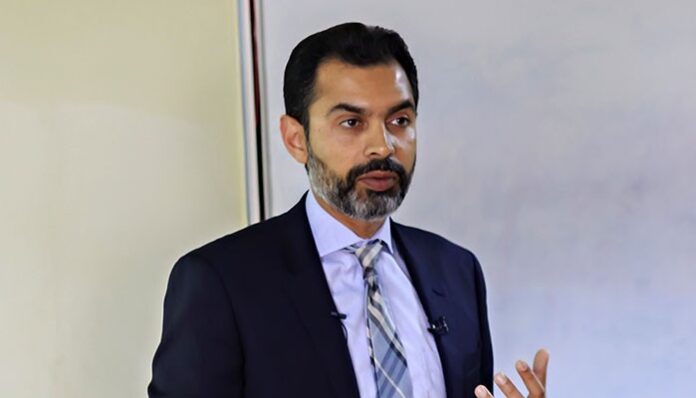State Bank of Pakistan (SBP) Governor Dr Reza Baqir has said that Pakistan’s economy is estimated to grow by 4-5 percent in the ongoing fiscal year.
Addressing a press conference on Friday, he said that the foreign exchange reserves of the central bank would reach a historic high level once the country receives $2.77 billion on August 23 from the International Monetary Fund. He said that earlier, the highest ever reserves of $19.5 billion were recorded in the year 2016.
He also said that the increase in reserves would help provide coverage to imports into the country, saying that since the country is currently in recovery mode, it needs more imports. He added that addition of $2.77 billion in national reserves is a positive sign for the country’s economy.
Referring to apprehensions raised by some of the economists about the rising trend of Current Account Deficit (CAD), Baqir said that the deficit would likely to remain at 2-3 percent of GDP during the current fiscal year 2021-22 which is a moderate ratio. Moderate increase is a good sign for the economy provided that it should remain sustainable, he said, adding: “We were in deep scramble in 2017-18 when our CAD went up to $19 billion or 6 percent of GDP.”
The governor said that there are three signs that the economy could be in trouble due to rising current account deficit. First alarming bell, he said, is that amid growing CAD, fluctuation in the exchange rate is high and non-adjustable. Similarly, he said, when the foreign exchange reserves are at the lowest rate then the growing current account deficit can hurt the economy. He also said that about three years ago all the three alarming bells were ringing as the exchange rate was not making two-way adjustments and the country’s forex reserves were also at a very low level.
However, Baqir said, now the situation is the other way round as the country’s forex reserves are going to be at historic highs coupled with a stable market based exchange rate that is making two way adjustments. He said, “About two years ago, our economy was in recession mode but now it has come out of the stabilisation phase and entered the growth phase.”
Similarly, he said that about three months ago, Pakistan’s GDP growth rate was being foreseen at 2 percent but now it has been proved that it had grown by 4 percent in the previous year while in the current year, according to the SBP estimation, it would grow by 4-5 percent.
To a question, the governor said that a higher growth during the past government was unsustainable because it suddenly went down and Pakistan had to go again to the International Monetary Fund (IMF) for a new programme. However he said this time growth seems to be sustainable and it would further rise in days to come.
Elaborating the reasons behind a sustainable growth, the governor said Pakistan’s exchange rate is now market-based and that its forex reserves are also going up. Furthermore, he said the IMF also accepted that Pakistan has shown tremendous performance in increasing the net international reserves
Replying to another question, Baqir said after the outbreak of Covid, the average international debt to GDP increased by around 10 percent; however, Pakistan’s debt to GDP ratio remained in control and increased marginally.






















